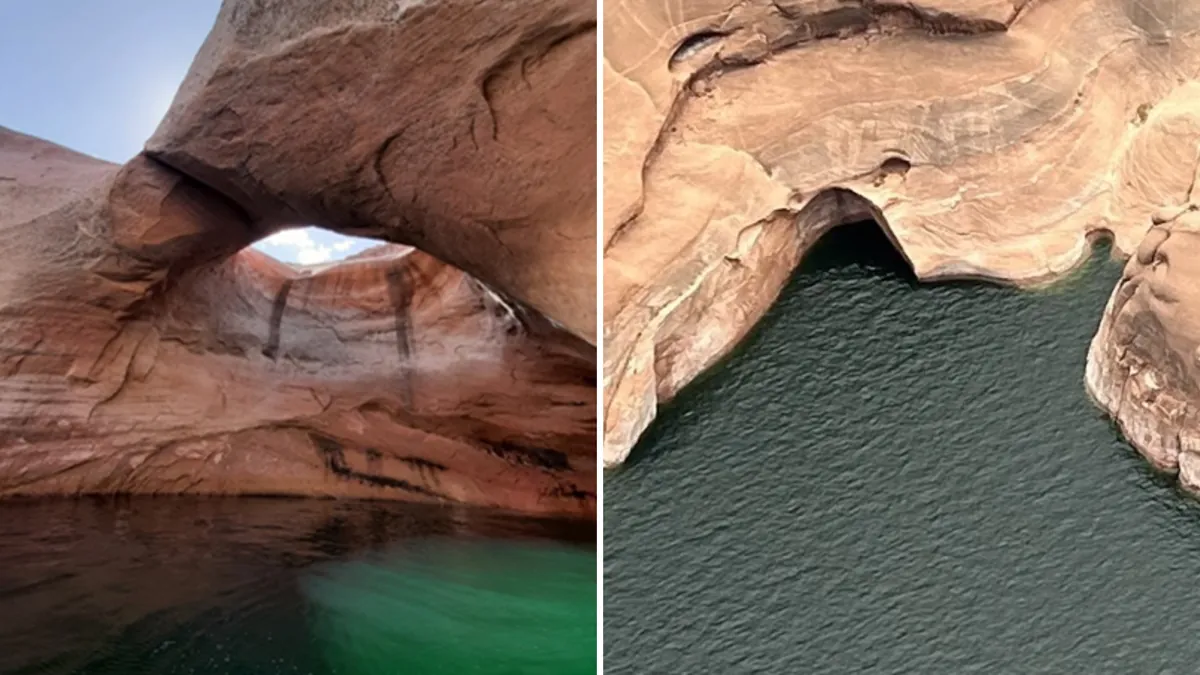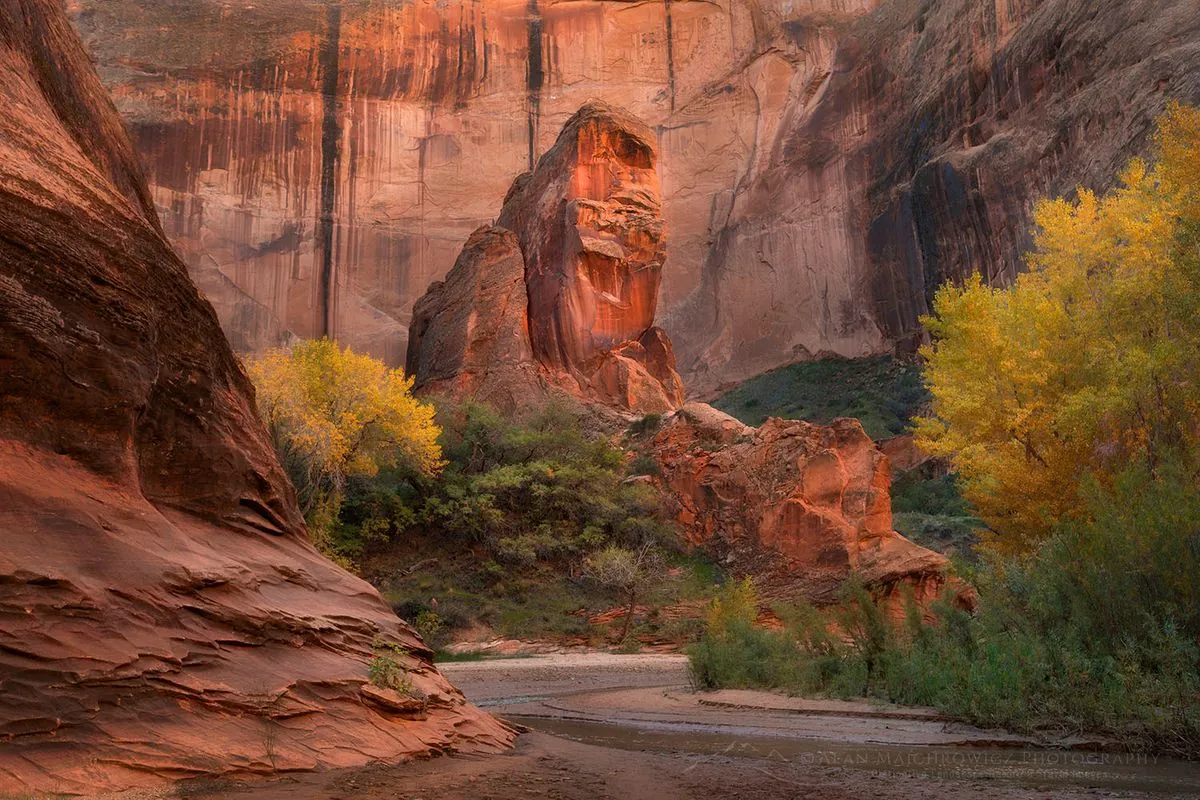Iconic "Double Arch" Collapses in Glen Canyon National Recreation Area
A renowned geological formation in southern Utah has collapsed, likely due to changing water levels and erosion. The incident highlights the delicate balance between natural processes and human intervention in protected areas.

In a significant geological event, the Michelle Kerns, superintendent of the Glen Canyon National Recreation Area, emphasized the importance of safeguarding the area's mineral resources, stating, "These features have a life span that can be influenced or damaged by manmade interventions."
The collapsed arch, formed from Navajo sandstone dating back 190 million years to the late Triassic and early Jurassic periods, had been shaped by natural erosion processes over millennia. This fine-grained sandstone, known for its distinctive red color and cross-bedding patterns, can reach thicknesses exceeding 2,000 feet in some areas.
Glen Canyon National Recreation Area, established in 1972, spans nearly 2,000 square miles across the Utah-Arizona border. The area, named for its numerous narrow side canyons, attracts over 4 million visitors annually, offering popular activities such as boating and hiking.

The creation of Lake Powell, the second-largest man-made reservoir in the United States, has significantly impacted the region's ecosystem and geology. Completed in 1963, the Glen Canyon Dam led to the formation of Lake Powell, submerging many archaeological sites once inhabited by ancient Puebloan cultures.
Recent years have seen substantial fluctuations in Lake Powell's water levels due to prolonged drought conditions. These changes, combined with the reservoir's presence, have altered the natural erosion processes in the area, potentially contributing to the arch's collapse.
The Glen Canyon area is home to diverse wildlife, including desert bighorn sheep and peregrine falcons, adapting to an environment transformed by human intervention. As visitors continue to explore this unique landscape, the recent collapse serves as a reminder of the delicate balance between preservation and public access in protected natural areas.
"The collapse serves as a reminder to protect the mineral resources that surround the lake."
This event underscores the ongoing challenges faced by park management in preserving geological features while maintaining public access to these remarkable natural wonders.


































